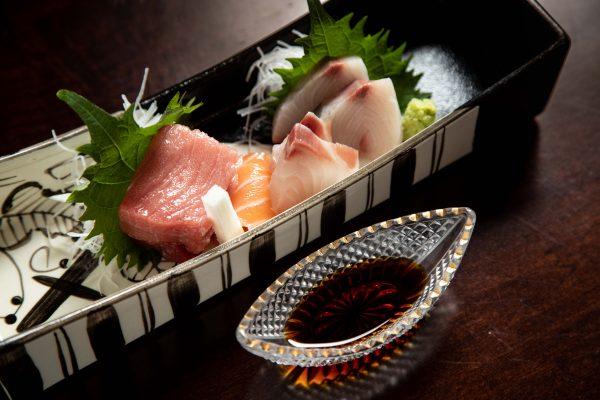Each dish is a masterpiece in miniature.
Slices of sashimi gleam in a lacquered tray. Salmon temari-zushi and snowy-skinned dried persimmon nestle in a brilliant jade green dish. A leaf-wrapped parcel of mushrooms and meat, folded with the precision of origami, rests behind a garden of gingko-shaped sweet potato, red wine-stained bayberry, and cloud-like cauliflower crowned with a single ringlet of chili.





